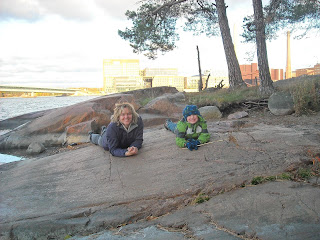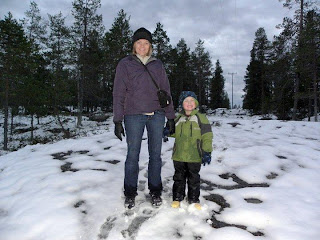Here's a link to the online version of the article:
http://www.earthmagazine.org/article/santa-fe-impact-crater-discovery-series-fortunate-events
Below is an annotated photo I took of a Santa Fe shatter cone outcrop that formed in Precambrian schist. For reference, the field notebook I used for scale is about 4 inches tall. You can see the yellow outlines I made around the most prominent shatter cones -- there are millions at this location -- ranging from meter-sized to millimeter-sized.
Shatter cones are fractal, which means their telltale shape repeats all the way down to the microscopic scale. The cones "point" to the center of the impact structure or crater, which is where the meteorite hit the Earth. A shockwave was created by this massive meteorite impact, and caused permanent deformation (shatter cones) to the Precambrian schists as it passed through the bedrock.
So when you see a shatter cone you're basically looking at a fossilized shockwave!
Unfortunately, no one has discovered an impact crater here in Washington State, though it would be nice to have a local one to investigate. More people to get out and take a second look at road cuts, upturned beds, and gravity anomalies around the state. If you think you've found something, shoot me an email and I'd be happy to take a look.
You can check out all the confirmed meteor impact sites worldwide at this website: http://www.passc.net/EarthImpactDatabase/index.html
Earth Magazine (http://www.earthmagazine.org/) is published by the American Geosciences Institute.
















